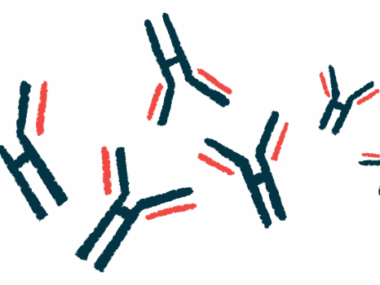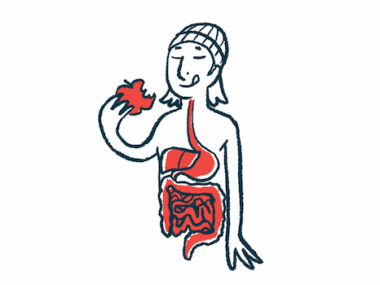Frequency of muscle disease in SSc shows need for biomarkers: Study
Condition is associated with inflammation, end-organ involvement
Written by |

Muscle disease is common in people with scleroderma and is associated with inflammation and specific end-organ involvement, according to an Australian study.
The findings underscore the “clinical, functional, and prognostic importance of simple biomarkers ” for identifying SSc-related muscle disease, the study’s researchers wrote in “Proximal weakness and creatine kinase elevation in systemic sclerosis: clinical correlates, prognosis and functional implications,” which was published in Seminars in Arthritis and Rheumatism.
Scleroderma, also called systemic sclerosis (SSc), is a chronic disease that features excessive scarring of the skin and other organs due to abnormal immune responses against the body’s own tissues.
Muscle disease, or myopathy, can be common in SSc and develop due to the indirect effects of the disease, such as malnutrition. A previous study using MRI scans showed muscle involvement was found in up to 40% of asymptomatic SSc patients. A lack of consensus remains about what SSc-myopathy is and of biomarkers for muscle disease in SSc, leading researchers to assess whether two routine clinical biomarkers of muscle disease — elevated blood levels of creatine kinase (CK) and proximal muscle weakness (PW) — could help identify those at risk for more severe outcomes.
The scientists analyzed data from patients enrolled in the Australian Scleroderma Cohort Study between 2007 and 2023 who had at least one assessment of PW and CK levels during follow-up.
ID’ing biomarkers for scleroderma
Muscle weakness was defined as upper or lower limb proximal muscle power of less than 5 in 5, as assessed by a physician. Proximal muscles are those closest to the trunk, such as ones in the shoulders, elbows, and hips. Elevated CK was defined as a minimum of 140 international units per liter, or IU/L.
Patients were divided into four groups — PW and elevated CK levels at the same assessment; only PW, but no CK elevation or vice-versa; and no signs of PW and CK elevation. The analysis included 1,786 patients (mean age, 46.6; 14.2% men). About a quarter (26.8%) had diffuse cutaneous systemic sclerosis (dcSSc), and interstitial lung disease (ILD) was present in 28.6%.
PW was detected in 390 participants (21.8%) and elevated CK in 565 (31.6%). Both PW and elevated CK were reported in 79 patients (4.4%), while no clinical feature of muscle disease (negative for PW and elevated CK) was reported in 1,015 patients (56.8%). PW alone was seen in 265 patients (14.8%) and elevated CK in 427 (23.9%).
Myositis, or muscle disease due to inflammation, was detected in 44 patients (2.5%), as shown by muscle biopsies. Patients with PW and elevated CK were the most common group with myositis (17.7%). This group was also more likely to have dcSSc, tendon friction rubs, digital ulcers, and an inflamed synovial membrane of a joint, called synovitis.
Consistent with a more severe presentation, these patients required immunosuppressive medications, such as prednisolone, more often and had a higher rate of ILD and impairments in pumping blood out of the heart’s left ventricle with each contraction.
PW, either alone or accompanied by elevated CK levels, was significantly associated with older age at SSc onset, a higher rate of digestive problems, and heart and lung disease, including pulmonary arterial hypertension.
Participants with high CK levels alone were more often men positive for anti-Scl70 antibodies, which are related to SSc severity and lung involvement. No other significant clinical differences were seen between patients without any signs of muscle disease and those with high CK alone.
Patients with PW and elevated CK had a 3.6 times increased risk of death over those without muscle disease, according to a statistical analysis that accounted for age, sex and dcSSc. Having PW alone was associated with a 2.1 times increased risk of death.
PW, alone or combined with high CK, correlated with poorer physical function, as assessed by the health assessment questionnaire disability index. These patients also showed impaired exercise capacity, as measured by the 6-minute walk distance test, and shortness of breath. CK elevation alone had no significant impact on breathing capacity or physical function compared to no signs of muscle disease.
“Despite focusing only on clinical assessments of potential SSc-myopathy, we have identified important clinical, functional and prognostic correlates of these phenotypes in a longitudinal analysis of a large SSc cohort,” the investigators said.






